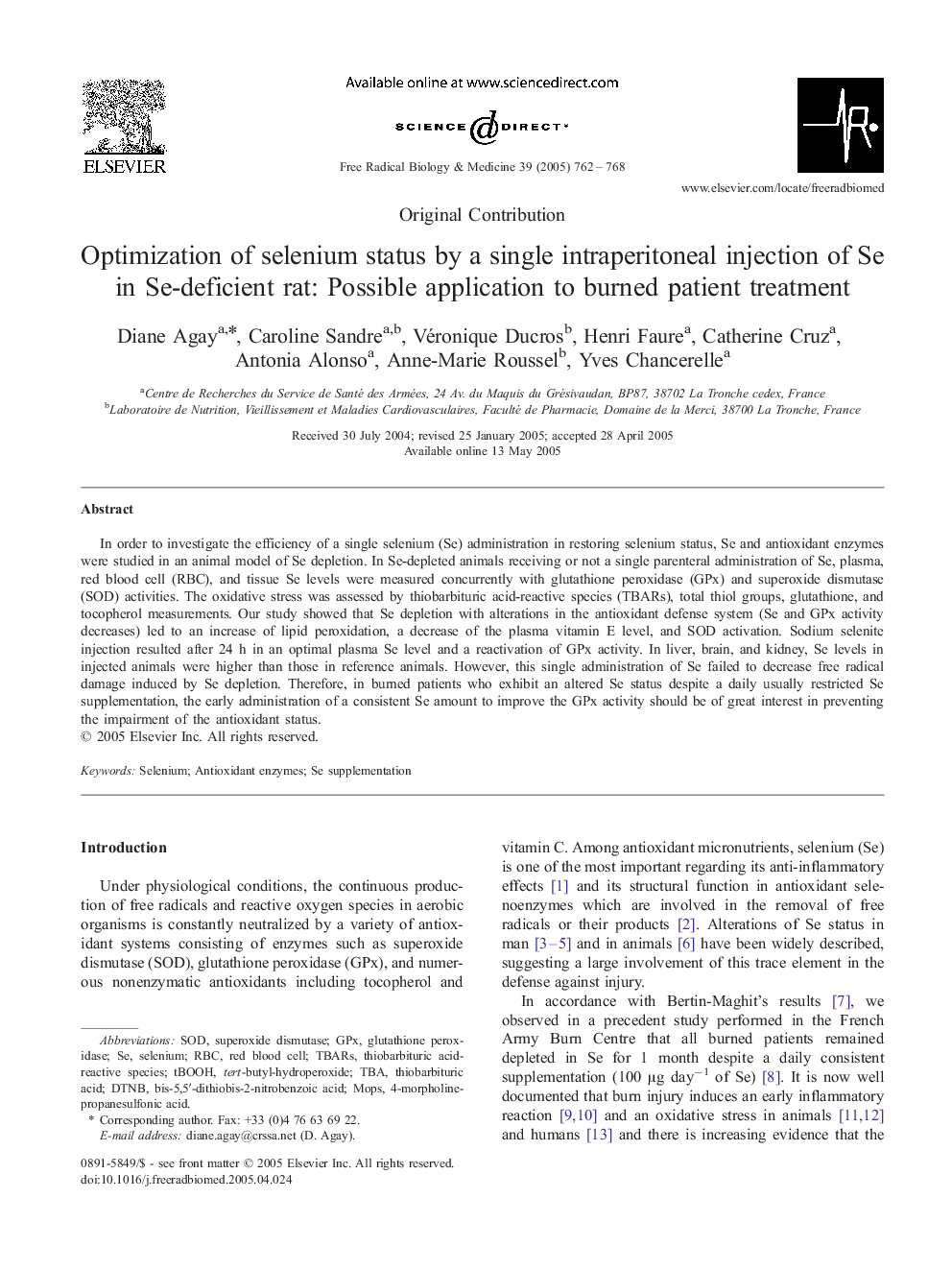| Article ID | Journal | Published Year | Pages | File Type |
|---|---|---|---|---|
| 10739059 | Free Radical Biology and Medicine | 2005 | 7 Pages |
Abstract
In order to investigate the efficiency of a single selenium (Se) administration in restoring selenium status, Se and antioxidant enzymes were studied in an animal model of Se depletion. In Se-depleted animals receiving or not a single parenteral administration of Se, plasma, red blood cell (RBC), and tissue Se levels were measured concurrently with glutathione peroxidase (GPx) and superoxide dismutase (SOD) activities. The oxidative stress was assessed by thiobarbituric acid-reactive species (TBARs), total thiol groups, glutathione, and tocopherol measurements. Our study showed that Se depletion with alterations in the antioxidant defense system (Se and GPx activity decreases) led to an increase of lipid peroxidation, a decrease of the plasma vitamin E level, and SOD activation. Sodium selenite injection resulted after 24 h in an optimal plasma Se level and a reactivation of GPx activity. In liver, brain, and kidney, Se levels in injected animals were higher than those in reference animals. However, this single administration of Se failed to decrease free radical damage induced by Se depletion. Therefore, in burned patients who exhibit an altered Se status despite a daily usually restricted Se supplementation, the early administration of a consistent Se amount to improve the GPx activity should be of great interest in preventing the impairment of the antioxidant status.
Keywords
Related Topics
Life Sciences
Biochemistry, Genetics and Molecular Biology
Ageing
Authors
Diane Agay, Caroline Sandre, Véronique Ducros, Henri Faure, Catherine Cruz, Antonia Alonso, Anne-Marie Roussel, Yves Chancerelle,
